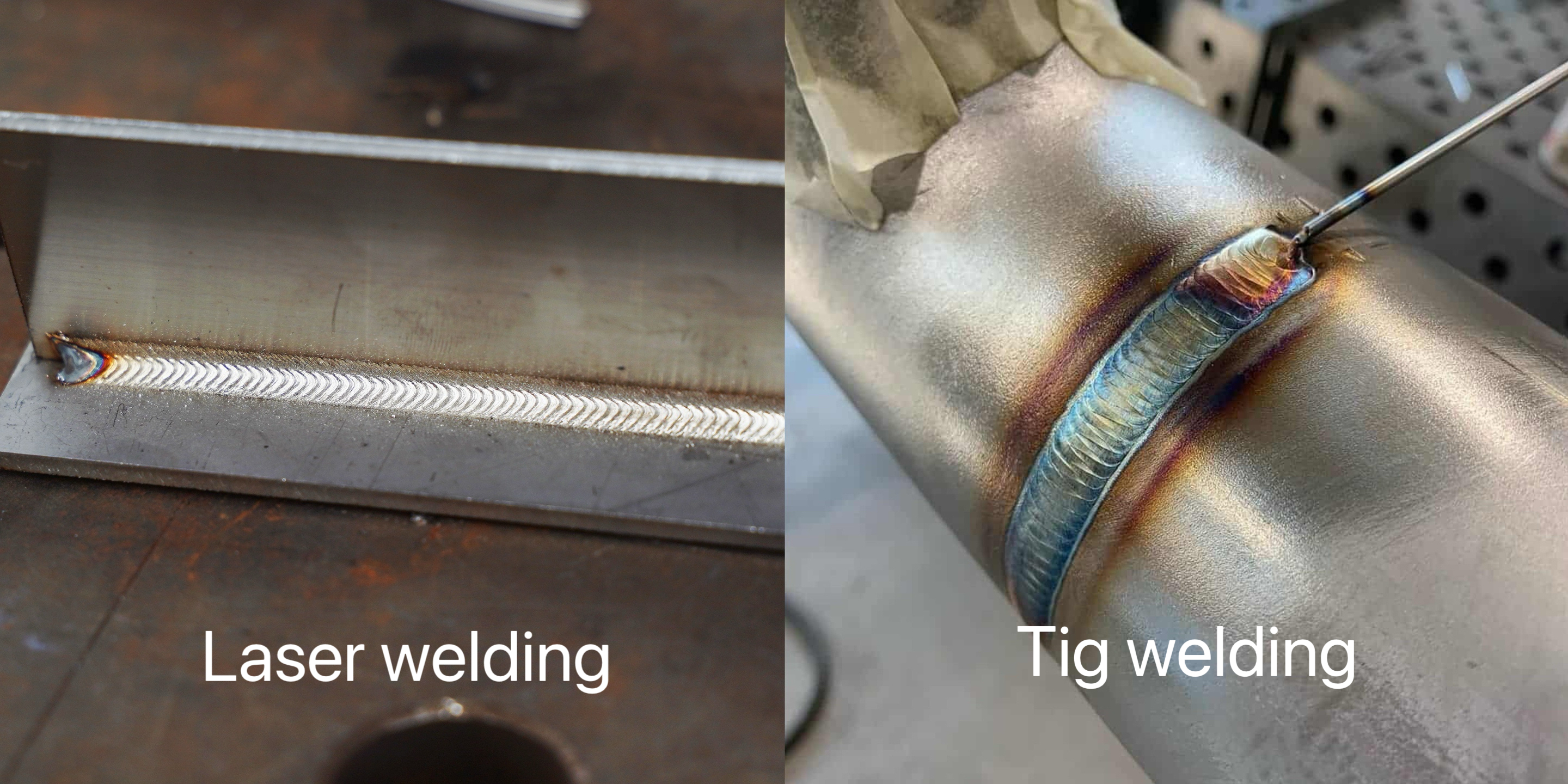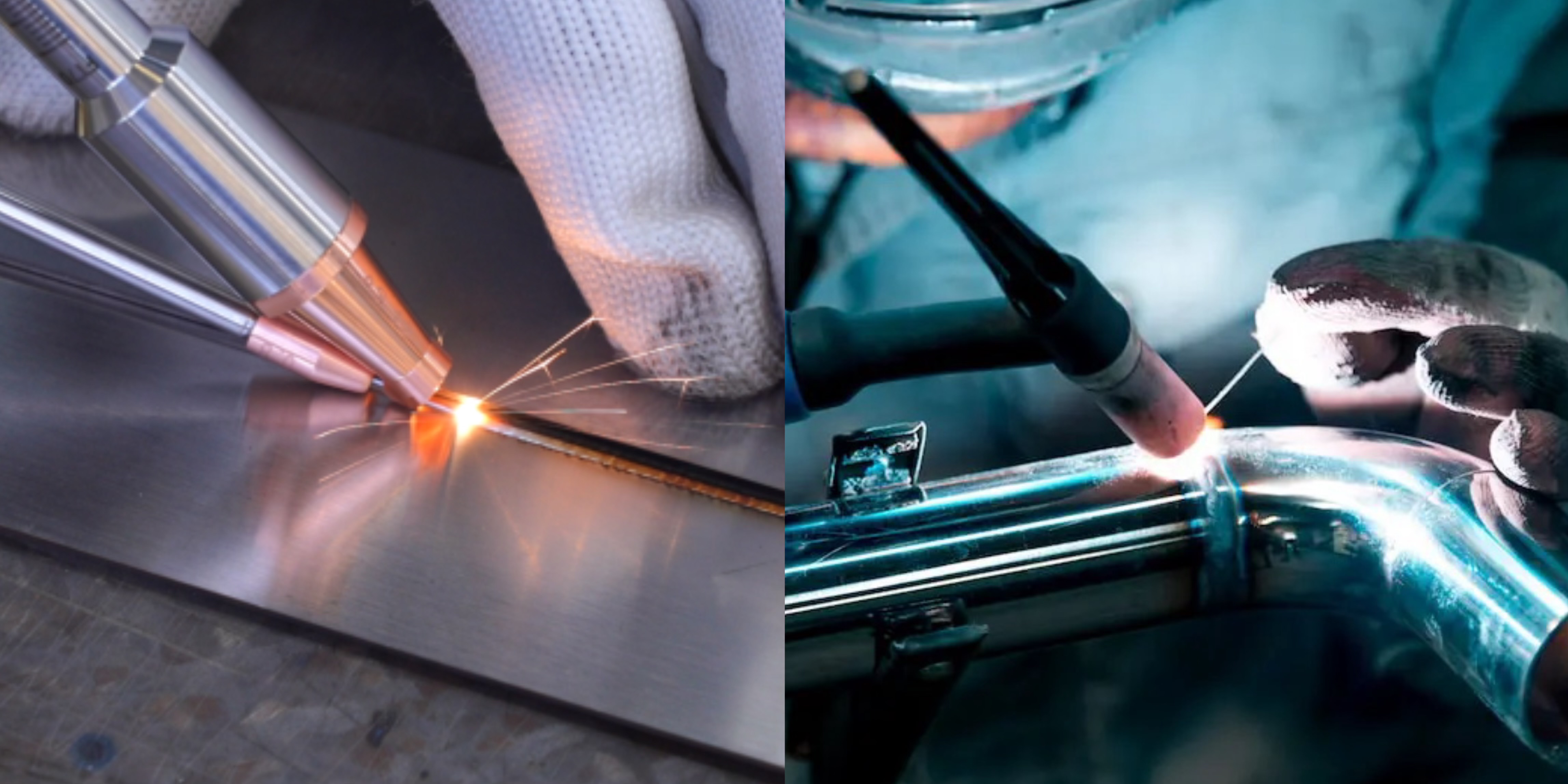Imagine you’re standing at a crossroads, each path leading to a different welding world. One path is lit with the steady, precise glow of TIG welding, where skill and control reign supreme. The other is powered by the focused intensity of laser welding, promising speed and precision at a whole new level. Which one do you choose? The answer lies in understanding how speed, precision, heat impact, and cost play into your unique needs.
In this article, we’ll dive into the pros and cons of both welding machine, helping you decide which welding technique will take your project to the next level. Ready to weld your way to success? Let’s find out which path is right for you!
Speed of Tig and Laser Welding Machine
In my view, when you compare TIG welding and laser welding machine, speed is a key point. It greatly affects how much work gets done and how well factories run.
Laser Welding Speed Advantages
- Great Speed Range: I find that laser welding machine works fast, at speeds of 1.2-10 meters per minute. This depends on the material and how you set it up.
- Handheld Use: If you use handheld laser welders on 1-3mm stainless or carbon steel, I suggest aiming for speeds between 10-50mm per second for best results.
- Efficiency Boost: Laser systems finish welding jobs 3-10 times faster than TIG welding. I see this speed difference most clearly in automated systems.
TIG Welding Speed Limits
- Usual Pace: TIG welding usually moves at about 10-25 cm per minute.
- Why It’s Slower: Based on my experience, the slower speed happens because you need manual control. You have to manage the filler rod and watch the weld pool carefully.
- Takes More Time: TIG offers precise welds, which is good. But its slow speed cuts down total output by a lot.
Automation and Non-Stop Production
Laser welding integrates seamlessly with CNC machines and robotic systems, enabling continuous, high-speed production with minimal interruptions—an ideal solution for industries like automotive and aerospace where fast, efficient manufacturing is critical.
Real-World Output Effect
- Case Study Example: One study I read showed laser welding machine cut the work time for one part from 90 minutes (using TIG) down to only 10 minutes. I think that’s impressive.
- Other Gains: Laser welding machine needs little cleanup after welding. It also causes less bending or warping of the material.
- Material Examples: – You can laser weld 1mm aluminum at speeds up to 3.5 meters per minute. – I’ve seen a 3.2kW laser system weld 1.2mm materials almost three times faster than similar TIG setups.
Precision of Tig and Laser Welding Machine
I find that TIG welding and laser welding machine have clear differences in precision. Here’s my breakdown:
- Laser Welding Precision: From my experience, this method offers very high accuracy. It uses a focused laser beam. Weld widths can be tiny, just 0.1 mm wide. This allows for great accuracy, which I think is perfect for detailed designs. It also works well on materials that are easily damaged by heat. Because it uses little heat, there’s very little warping. This helps keep the areas around the weld safe.
- TIG Welding Precision: TIG welding can be precise, too. However, I believe the result depends a lot on the skill of the person doing the welding. You can get good welds and fine details with TIG. Still, there’s a bigger chance for human error compared to laser welding, which is often automated and very focused.
- Speed And Consistency: I’ve observed that laser welding machine is faster. It also repeats welds very accurately, mainly when machines handle the process. This keeps the weld quality the same every time. TIG welding usually takes more time and needs careful hand control. This can affect how alike the welds look, particularly when making many items.
- Applications: In my view, laser welding is better for industries needing high accuracy. Think aerospace, medical devices, and electronics. For instance, it’s used to seal titanium cases for medical implants. It can also repair turbine blades that have difficult shapes.
I recommend laser welding machine when you need extremely fine details and very little warping. Its high precision and control make it ideal for those jobs. TIG welding is still a great option, in my opinion, for projects where the final look is important and controlled by the welder.
Heat Effects of Tig and Laser Welding Machine
When I compare TIG welding and laser welding machine, I see that managing heat is really important. Heat affects weld quality, material features, and how the final product works.
Heat Input Control
In welding, heat input plays a crucial role in determining the outcome of the process. In TIG welding, factors like current, travel speed, and arc length affect heat input. Slower movement increases heat, which can impact the material’s properties, while faster travel speeds help reduce the heat-affected zone (HAZ). The arc itself can reach extreme temperatures of 5,500°C to 11,000°C, adding significant heat to the base metal. In contrast, laser welding focuses heat on a small area, offering precise control over heat application. This focused approach minimizes heat spread, reducing distortion and residual stress, and protecting the surrounding material from excessive heat exposure.
Heat-Affected Zone (HAZ)
TIG welding generates a wider heat-affected zone (HAZ) due to greater overall heat transfer. This can alter the crystal structure and soften heat-sensitive materials, often changing the mechanical properties around the weld area. In contrast, laser welding creates much smaller heat-affected zones (HAZs) by concentrating energy into a precise spot. The metal cools quickly, which helps preserve its strength and maintain material properties closer to the weld joint.
Material Distortion and Stress
TIG welding often causes distortion due to higher heat input, especially in thin metals, leading to warping. Techniques like chill blocks or AC polarity may be required to control heat flow. With moderate temperature differences and slower cooling, TIG welding can leave residual stress and potentially cause cracking in high-carbon steels. In contrast, laser welding’s precise heat application helps reduce warping, making it ideal for tasks that require exact shapes, such as in aerospace or automotive industries. The process involves rapid heating and cooling, which can create sharp temperature changes, and preheating or other methods may be necessary to ensure even temperature distribution.
Effects on Material Properties
TIG welding can soften materials that have already been heat-treated, reducing their resistance to rust, such as causing carbide precipitation in stainless steel. It can also lead to strength loss in the heat-affected zone (HAZ). To mitigate these effects, using the right filler metals and cooling methods is essential. On the other hand, laser welding preserves the base metal’s chemistry and properties, reducing risks like grain coarsening or oxidation. With less heat applied, the material remains strong, and typically, less post-welding work is needed to restore its properties.
Thinking About Uses
- TIG welding applications: TIG welding is great for precise hand welds, even though it requires more heat. It’s ideal for small jobs or complex shapes where the welder needs full control. While it’s slower, it’s more adaptable to different situations.
- Laser welding applications: Laser welding machine is ideal for high-volume production as it uses less heat. I recommend it for industries that require detailed, high-quality welds. It’s also faster, especially when minimal cleanup is needed after welding.
Cost of Tig and Laser Welding Machine
Thinking about cost is very important when you choose between TIG welding and laser welding machine. I find money matters are often key in making this choice. Each method affects your budget differently across various cost areas.
Initial Investment
Laser welding systems can range from $5,000 for basic models to over $1 million for advanced setups, with most industrial-grade machines priced around $100,000 or more, making it a significant upfront investment. In contrast, TIG welding is much more affordable, with prices ranging from $500 to $69,834. Entry-level machines for hobby use start around $500–$2,500, making it a more accessible option for small businesses and workshops.
Operational Expenses
- Laser Welding Running Costs: Laser welding machine uses fewer materials, reducing ongoing supply costs. While skilled operators command higher wages, the process offers production speeds up to four times faster than TIG welding. However, annual maintenance can cost up to 10% of the machine’s purchase price.
- TIG Welding Running Costs: TIG welding involves ongoing costs for tungsten electrodes ($1–$10 per pound depending on the alloy), continuous use of shielding gas, and filler rods, all of which add to operating expenses. It also requires more manual labor, making each weld slower to complete.
Long-Term Cost Efficiency
- Laser Welding: In my experience, even though laser costs more at first, its speed and efficiency can make it a better value for companies making many items. It saves money over time in high-volume work.
- TIG Welding: I think TIG is a practical choice if you have less money to start. Its lower initial cost and reasonable upkeep make it suitable for smaller jobs, custom work, and businesses with tighter budgets.
Cost-Application Match
I believe the best choice depends on what you need to do: I recommend laser welding if you need to produce many items quickly. The speed advantage makes the higher initial cost worthwhile. For smaller projects, one-off custom pieces, or when you have budget constraints, TIG welding is a great choice, offering flexibility and a lower upfront investment.
Summary
Now that you’ve seen the clear differences between TIG welding and laser welding machine, it’s time to choose the technique that best aligns with your project’s needs. Whether you’re aiming for the meticulous craftsmanship of TIG or the high-speed precision of laser welding, both methods bring immense value to the table. But why settle for anything less than the best? If you’re looking for cutting-edge technology that guarantees top-notch results and faster production times, our laser welding solutions are exactly what you need. Don’t miss out on the future of welding—contact us today and take the first step toward achieving flawless, efficient welds with state-of-the-art laser technology. Your next project deserves the best—why not make it happen now?




Recent Comments